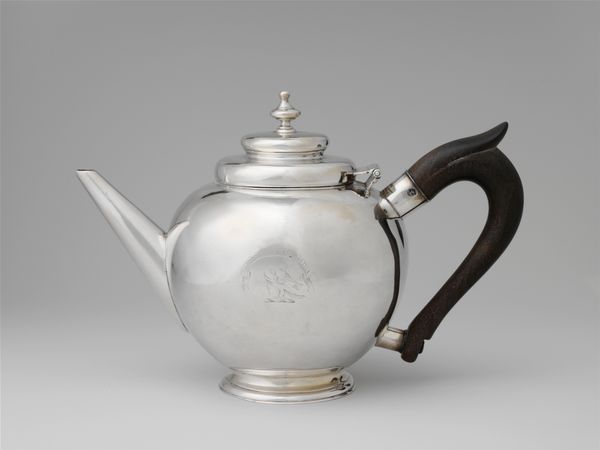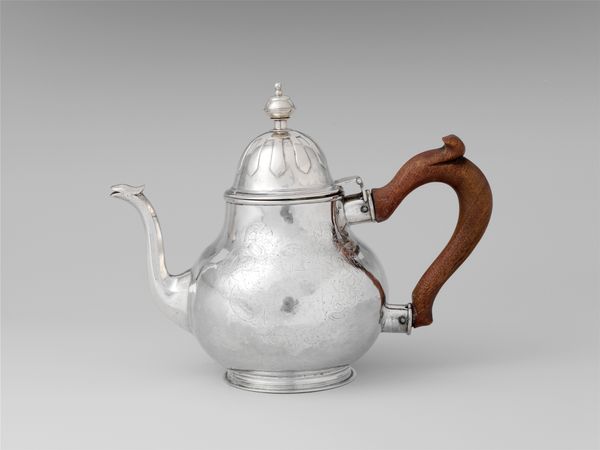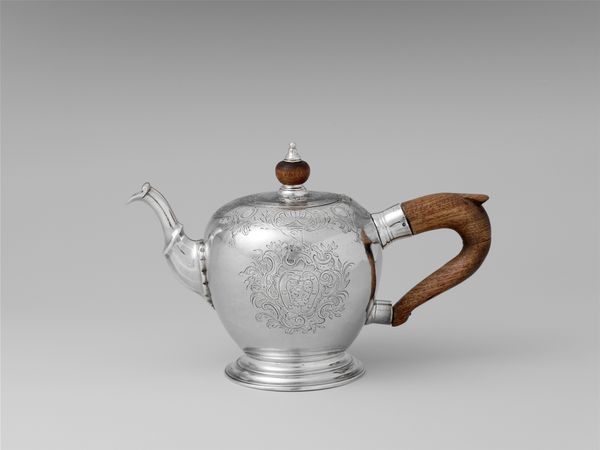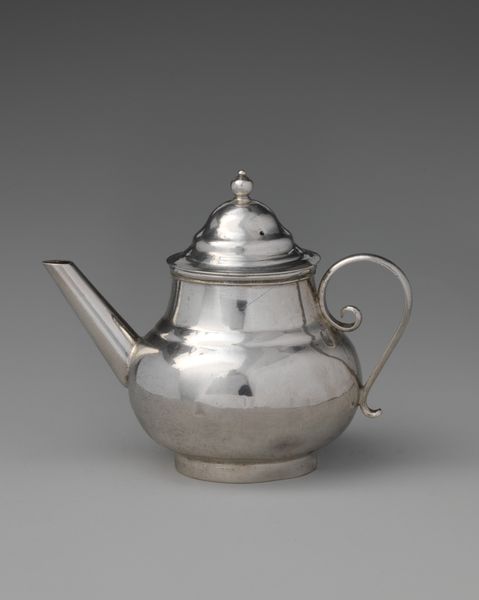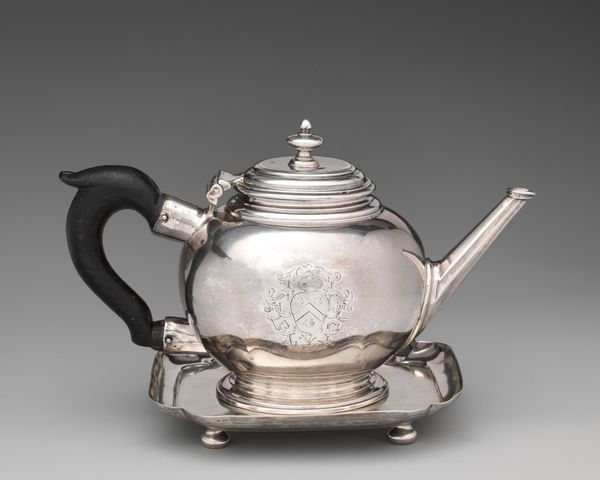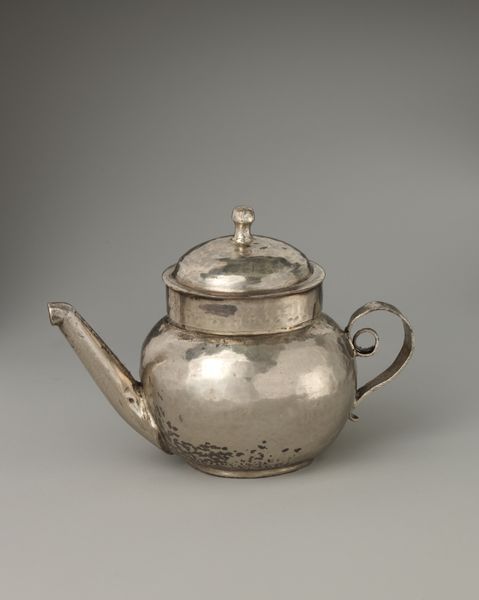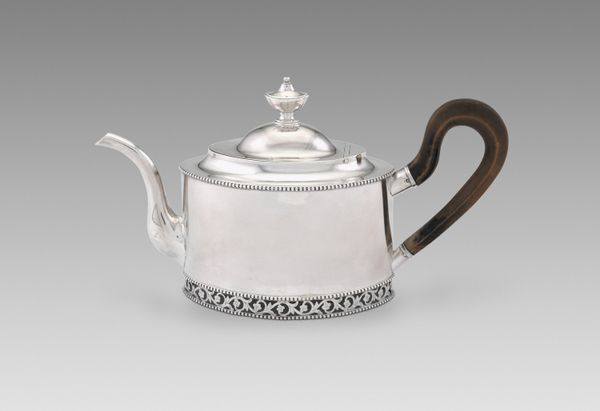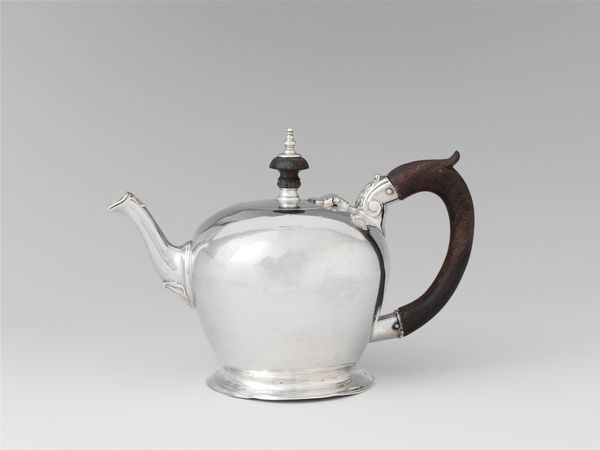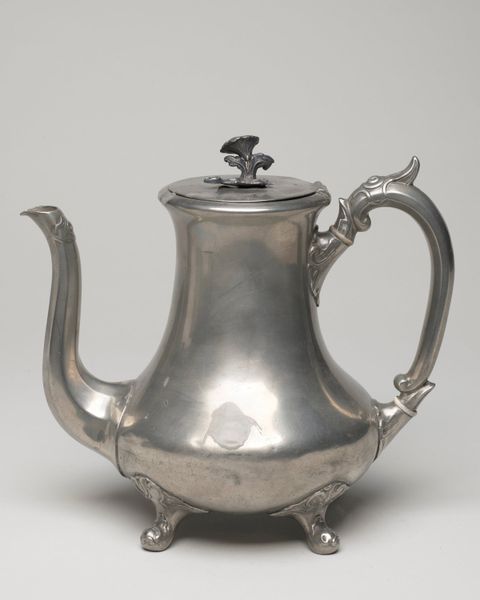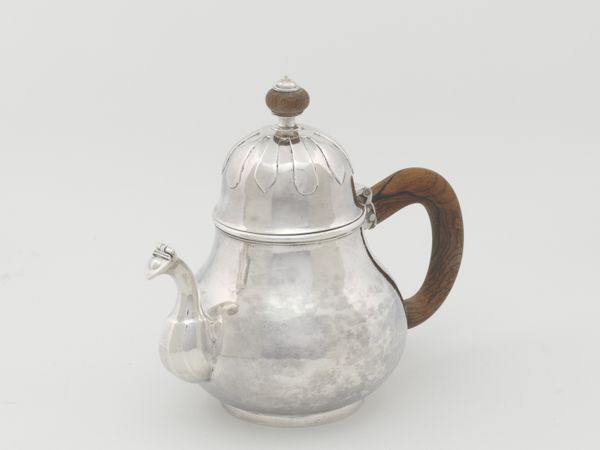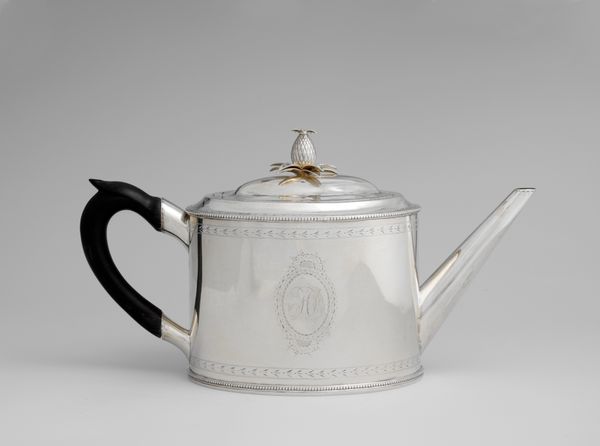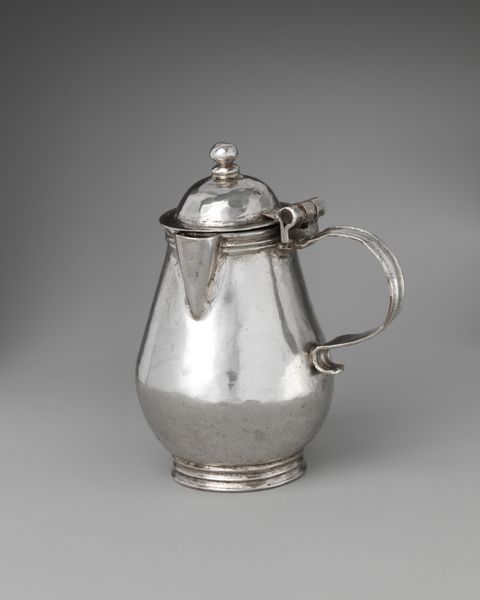
silver, metal
#
neoclacissism
#
silver
#
metal
#
decorative-art
Dimensions: Overall: 6 1/2 x 10 1/16 in. (16.5 x 25.6 cm); 18 oz. 17 dwt. (585.7 g) Foot: Diam. 4 11/16 in. (11.9 cm) Body: H. 4 11/16 in. (11.9 cm); 16 oz. 8 dwt. (509.5 g) Cover: 2 1/4 x 2 15/16 in. (5.7 x 7.5 cm); 2 oz. 9 dwt. (76.2 g)
Copyright: Public Domain
This teapot was made by Abraham Dubois, a New York silversmith, sometime around the turn of the 19th century. Its form is neoclassical: a simple cylindrical body, elegantly engraved, capped with a pinecone finial, and fitted with a wood handle. Dubois would have likely started with sheets of silver, hammering them to the desired thickness, before raising the body on a mandrel. The spout and handle sockets would be carefully soldered in place, then the whole piece polished to a gleaming finish. The marks of the maker are discreet, yet the labor involved in the production process is considerable. Think about the social context: tea was a luxury good, and the rituals around it were important markers of status. This teapot, therefore, speaks not only to Dubois’s skill, but also to the aspirations of his clientele. Objects like this challenge the conventional hierarchy between art and craft. They were both beautiful and useful, embedded in everyday life and also in the wider circuits of commerce.
Comments
No comments
Be the first to comment and join the conversation on the ultimate creative platform.
